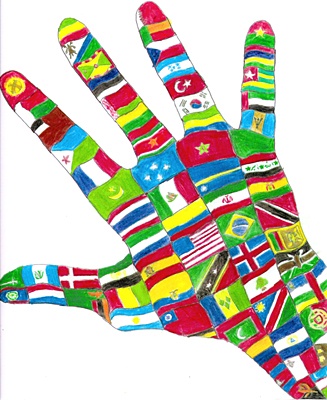All Nonfiction
- Bullying
- Books
- Academic
- Author Interviews
- Celebrity interviews
- College Articles
- College Essays
- Educator of the Year
- Heroes
- Interviews
- Memoir
- Personal Experience
- Sports
- Travel & Culture
All Opinions
- Bullying
- Current Events / Politics
- Discrimination
- Drugs / Alcohol / Smoking
- Entertainment / Celebrities
- Environment
- Love / Relationships
- Movies / Music / TV
- Pop Culture / Trends
- School / College
- Social Issues / Civics
- Spirituality / Religion
- Sports / Hobbies
All Hot Topics
- Bullying
- Community Service
- Environment
- Health
- Letters to the Editor
- Pride & Prejudice
- What Matters
- Back
Summer Guide
- Program Links
- Program Reviews
- Back
College Guide
- College Links
- College Reviews
- College Essays
- College Articles
- Back
Be a Hero for the Earh
Global warming affects every living thing on Earth — people, plants, and animals. While scientists are working to better understand how the Earth’s climate will change over time, some effects are already evident: rising sea levels, shrinking glaciers and polar ice caps, changes in the distribution of plants and animals, increases in intense weather, and thawing of permafrost. As global warming is caused by an overabundance of greenhouses gases in the atmosphere, scientists suggest that it can be slowed by reducing greenhouse gas emissions and recapturing carbon dioxide (CO2) from the atmosphere.
For average citizens, this means reducing the amount of energy we use in our daily lives. Kids — and teachers — can be instrumental in making a difference and changing the planet’s future. Here are some activities and resources that can help you protect our only home.
A Big Responsibility
As we now know, Earth’s climate is changing as a result of human activities. Challenge your students to consider the issue of our impact on the plants and animals that share our planet by hosting a mock debate. Begin the discussion with these questions posed by Laurie David and Cambria Gordon, the coauthors of The Down-to-Earth Guide to Global Warming: “We now know that the way we are living is causing many species to become extinct. Is it okay for humans to interfere with nature so much? What is our responsibility to the polar bear, coral, frog, butterfly, and all the others?”
Have two teams of three students each take one side in the debate — one suggesting that extinction doesn’t matter and the other suggesting that it does — and argue their stance as best they can. Stage the debates for the rest of the class, and invite discussion about what was shared and what students’ conclusions are.
Global Warming in Your Own Backyard
Global warming is more than just an increase in temperature; it’s a change in the climate of our planet, which affects weather patterns, sea levels, and the normal range of plants and animals. Ask students to imagine the impact global warming will have in their own backyard and home. Have them create posters depicting what this scenario might be like, along with a short essay, story, or poem about this new and different world. Here are some possible impacts of global warming to suggest:
Poison ivy grows larger and becomes itchier as CO2 levels in the air increase.
Fall leaves turn a dull color and don’t last as long since frosts are delayed.
Disease-carrying ticks and mosquitoes expand their territory as northern regions become warmer.
Ski seasons shorten as less snow falls.
Allergies are triggered and asthma worsens as more pollen is produced due to high CO2 levels in the air.
Pancakes get drier as maple syrup production declines.
There are fewer outdoor ice rinks as winters get warmer.
Bark beetle populations explode due to lack of winter frosts, killing trees and making them more vulnerable to forest fires.

Similar Articles
JOIN THE DISCUSSION
This article has 0 comments.
